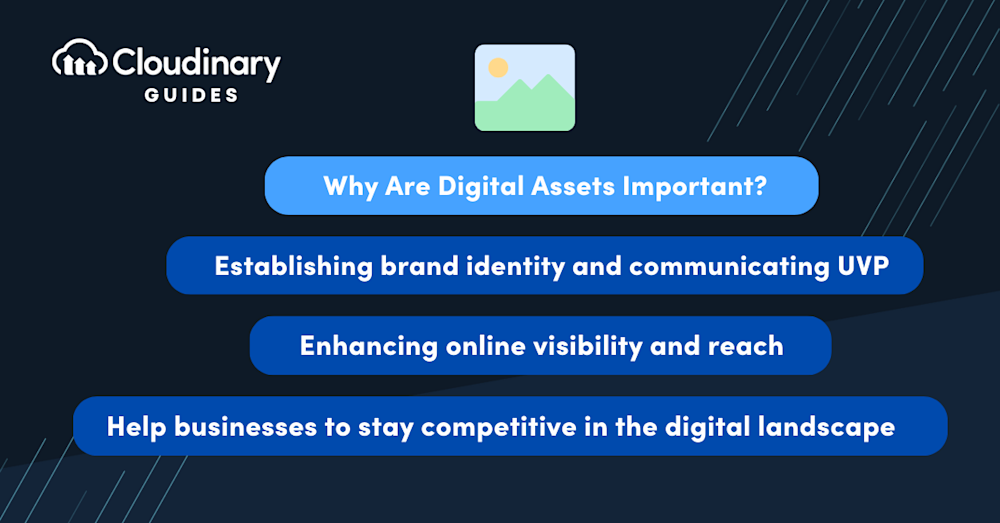Digital assets have become crucial to running a successful business in today’s tech-driven world. These assets not only help you stay competitive and relevant, but they also contribute to your overall growth and success. By leveraging the right digital assets, you can effectively reach your target audience, streamline your operations, and establish a strong online presence.
Fortunately, technology has made creating and managing digital assets more accessible and efficient than ever before. With a plethora of user-friendly design tools, content management systems, and other innovative solutions, crafting and organizing your digital assets has never been easier. Embracing the power of technology to build and maintain your digital portfolio is a surefire way to thrive in today’s fast-paced digital landscape.
By investing time and effort into creating high-quality digital assets, businesses can attract and retain customers, increase brand awareness, and ultimately drive sales. With that in mind, let’s take a closer look at how to create digital assets that will help your business stand out in today’s digital landscape.
What Is a Digital Asset?
A digital asset is any type of content that exists in a digital format, such as images, videos, audio files, and documents. This also includes music, sound effects, white papers, research reports, PDFs, presentations, spreadsheets, and design files. And with the recent explosion of online media, we’ve begun to see more widespread use of VR, AR, 360 videos too. Digital assets are an essential part of any business’s online presence, as they help to communicate the brand’s message and value proposition to the audience. They can be used in a variety of ways, including on social media profiles, websites, marketing materials, and more.
Why Are Digital Assets Important?
Digital assets hold significant importance in today’s interconnected world, as they serve as the building blocks for a successful online presence. They are essential for multiple reasons, and their value extends beyond mere aesthetics.
Firstly, digital assets enable businesses and individuals to establish their brand identity and communicate their value proposition effectively. High-quality visuals, engaging content, and user-friendly websites create a cohesive and memorable brand experience. As a result, digital assets help cultivate trust and credibility, increasing conversions and customer loyalty.
Secondly, digital assets are crucial in enhancing online visibility and reach. Businesses can attract and retain their target audience by creating and sharing valuable content, such as blog posts, infographics, and videos. Moreover, well-optimized digital assets can improve search engine rankings, driving organic traffic and increasing the chances of being discovered by potential customers.
Lastly, technology has made it easier than ever to create and manage digital assets, allowing businesses and individuals to stay competitive in the digital landscape. User-friendly design tools, content management systems, and innovative solutions have simplified the crafting and organizing of these valuable resources. By harnessing the power of technology, businesses can efficiently develop, deploy, and maintain a diverse array of digital assets that contribute to their overall growth and success.
8 Common Digital Assets and How to (Better) Create Them
Images
Images are one of the most common digital assets and can be created using a variety of methods. Professional photographers can use high-end cameras to capture stunning images, while amateur photographers can use their smartphones or point-and-shoot cameras to take photos. Editing software like Adobe Photoshop or Canva can enhance the images, add filters, text overlays, or adjust the color balance. There are also some AI tools that can generate images via text prompts or even use other images as references. High-quality images can be used to improve a brand’s website, social media profiles, and marketing materials and can help to convey the brand’s message and identity.
Videos
Videos are another popular digital asset that can be used for marketing, product demos, and more. Professional videographers can use high-end cameras and lighting equipment to create stunning videos, while amateur videographers can use their smartphones or basic cameras to capture footage. Software like Adobe Premiere or Animoto can edit the footage, adding text overlays, music, and transitions. Videos can showcase a brand’s products or services, tell a story, or provide valuable information to the audience.
Infographics
Infographics are a great way to present complex information in a visually appealing way. They can be created using design software like Canva or Piktochart. Infographics typically include charts, graphs, and icons that help illustrate the presented information. Infographics can be used to communicate data, statistics, or other information in a way that is easy to understand and engaging for the audience.
Web Pages
Web pages are essential for any online business and can be created using a variety of tools. Web pages can be used to showcase a brand’s products or services, provide information to the audience, or capture leads through contact forms or other calls to action. These can also be partially generated with AI, saving development time and assisting with writing on-page content.
Social Media Profiles
Social media profiles are essential digital assets for businesses to engage with their target audience. Social media profiles can be used to share content, interact with customers, and build a community around the brand. Different social media platforms have different requirements for profile images and formatting, so it’s important to ensure the profile is optimized for each platform.
Blog Posts
Blog posts are a great way to showcase a brand’s expertise and can be created using blogging platforms like WordPress or Medium. Blog posts can be written on various topics, including industry news, product updates, or how-to guides. There are a plethora of ways to use AI to generate this content as well, such as ChatGPT, Copy.AI, and Quillbot. Each of these platforms can generare full blog posts, or simply help your writers get their creative juices flowing. They can be used to attract website traffic, engage with the audience, and establish the brand as a thought leader in their industry.
E-books
E-books are a popular digital asset for businesses to offer as lead magnets or to provide valuable information to their audience. They can be created using writing software like Microsoft Word or Google Docs and then converted into a PDF format. And like other written content, AI tools can be used to help you plan out your e-book, or assist writing some sections as well. E-books can provide in-depth information on a specific topic, showcase a brand’s expertise, or offer a solution to a problem the audience is facing.
Podcasts
Podcasts are a growing digital asset that can be used to connect with a target audience more personally. They can be created using recording software like Audacity or GarageBand and then published on platforms like Apple Podcasts or Spotify. Podcasts can be used to share information, tell stories, or interview guests and can help to build a loyal following around the brand.
How To Manage Your Digital Assets
Effectively managing your digital assets is crucial for maintaining a streamlined workflow and consistently delivering high-quality content. Adopting the right strategies and tools simplifies the process and keeps your digital assets organized and accessible.
One key aspect of managing digital assets is automation. By automating repetitive tasks, such as file naming, metadata tagging, and resizing images, you can save time and reduce the risk of human error. Automation also enables you to maintain a consistent structure and format for your assets, making them easier to locate and use.
Content generation and self-service platforms are another valuable aspect of digital asset management. Leveraging these tools can streamline the creation of new assets, enabling your team to focus on more strategic tasks. For instance, AI-powered content generation software can automatically produce engaging copy for your website or social media channels. At the same time, self-service platforms allow users to create, edit, and manage assets independently, reducing the need for constant oversight.
A robust Digital Asset Management (DAM) solution, such as Cloudinary, is essential for effective digital asset management. Cloudinary is a cloud-based platform that offers a comprehensive suite of tools for storing, organizing, and optimizing your digital assets. With its user-friendly interface and advanced search capabilities, we make it easy to locate and manage your assets, ensuring that your team can quickly access the files they need.
Plus, our built-in image and video optimization features help you deliver high-quality, responsive content across various devices and platforms, enhancing the user experience and boosting your online presence. By implementing our DAM solution, you can take control of your digital assets and maximize their value for your business.
Ready to take control of your digital assets? Sign up for Cloudinary today and start organizing your content like a pro.


